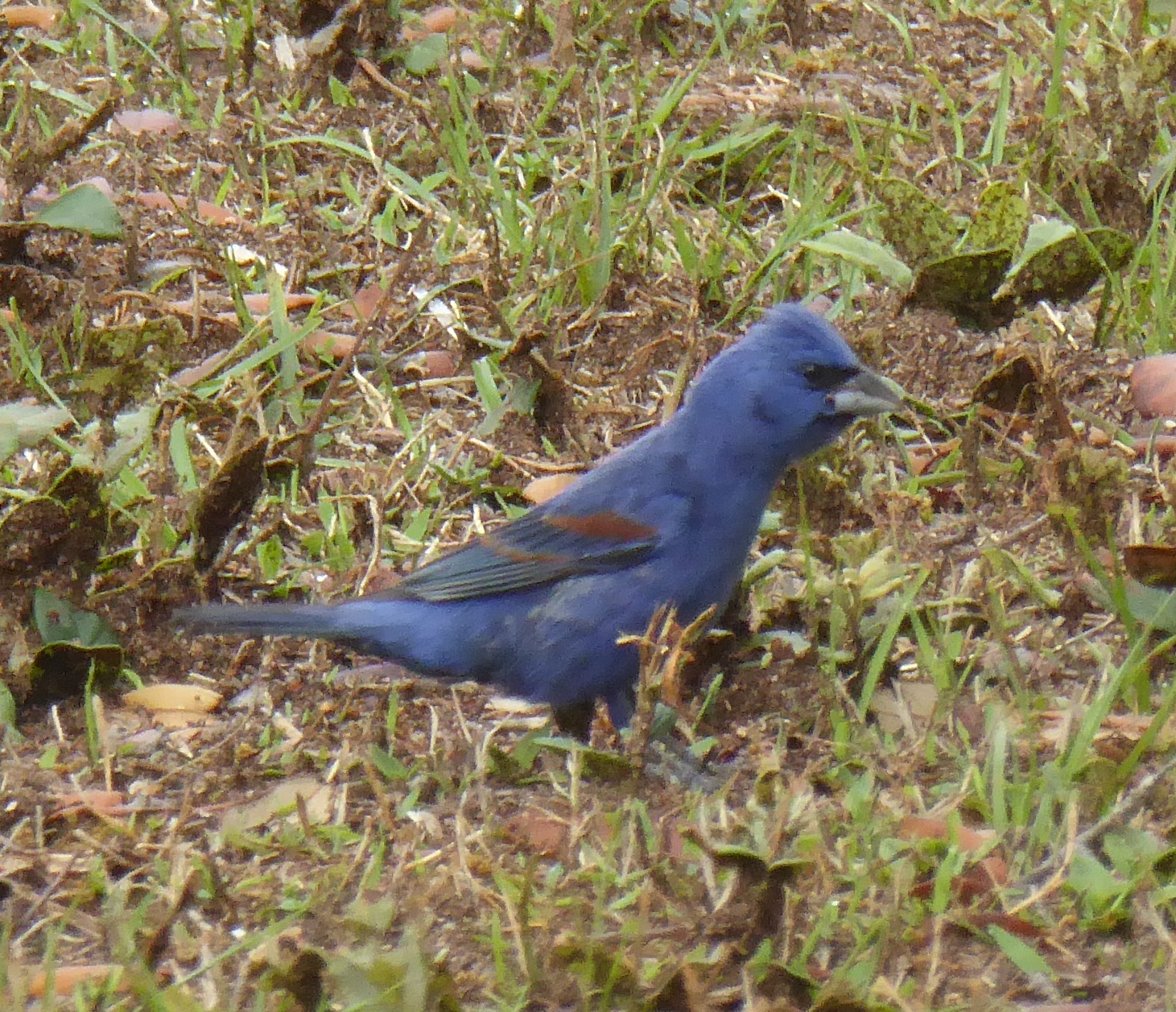2021 – Spring Migration in Levy County

This was our first spring migration since moving to the Nature Coast in Florida. Previously, we were 15 minutes from Fort De Soto Park, the mecca of spring migration birding. We didn’t know what to expect but hoped for the best.
There was a small front expected on a Friday night in mid-April which often brings some fallout. We headed early to the Cedar Key Museum State Park, a several-acre semi-wooded area along the northwest waterfront of the island. The park has the beautifully restored homestead of Saint Clair Whitman, who collected and displayed many local and Indian artifacts. The park also has a plaque commemorating the naturalist John Muir who visited Cedar Key in 1867 on his historic walk from Kentucky to Florida.
The flowering live oaks around the house seemed to attract the most birds, but other trees along the park boundaries were active as well. We met a longtime Cedar Key birder and picked up some local birding knowledge from her. A total of 34 species were observed including 10 warblers: Worm-eating, Black-and-white, Prothonotary, American Redstart, Cape May, Nothern Parula, Yellow, Palm, Yellow-rumped, and Prairie. Other great birds were Summer Tanager, Orchard and Baltimore Orioles, and Rose-breasted and Blue Grosbeaks. For us, this rivaled the spring migration birds at Fort DeSoto.

Worm-eating Warbler 
Yellow Warbler 
Magnolia Warbler 
Prairie Warbler 
Summer Tanager
eBird – Spreading the news
Of course, we posted our findings right away on eBird. This attracted the attention of other birders that were at the museum the next morning. A well-known birder from Pinellas county, Eric Haney was there working on a personal project to find 100 birds in each of Florida’s 67 counties. He had already seen a Cerulean Warbler high in oak trees. Eric is a very serious birder but also takes the time to share his knowledge and point out birds that others might not have seen. We let him know about the Great-horned Owl and Ruby-throated Hummingbird at the Trestle Trail and the Solitary Sandpipers at the Cedar Key Cemetary Boardwalk.
We continued birding in and around Cedar Key for the remainder of April. Nice additions were Veery, Gray-cheeked Thrush, Blackpoll, and Yellow-billed Cuckoo. The Gray Kingbirds were back too.

Gray-cheeked Thrush 
Yellow-billed Cuckoo
One of the birders we met at the museum told us that Steinhatchee WMA is a reliable place for Swainson’s Warbler. While we did not see this bird we were told the Great Dismal Swamp NWR in Norfolk Virginia is their breeding location. We will check it out on one of our trips north. We were happy to add Swallow-tailed Kite in the WMA and a Mississippi Kite at Fanning Spring.

Mississippi Kite 
Swallow-tailed Kite
All in all, it was a great spring migration. We look forward to many more on the Nature Coast.
Trip Birds: 90 Year Birds: 28 Life Birds: 0
Next Up: Bat Falcon – Texas

You must be logged in to post a comment.